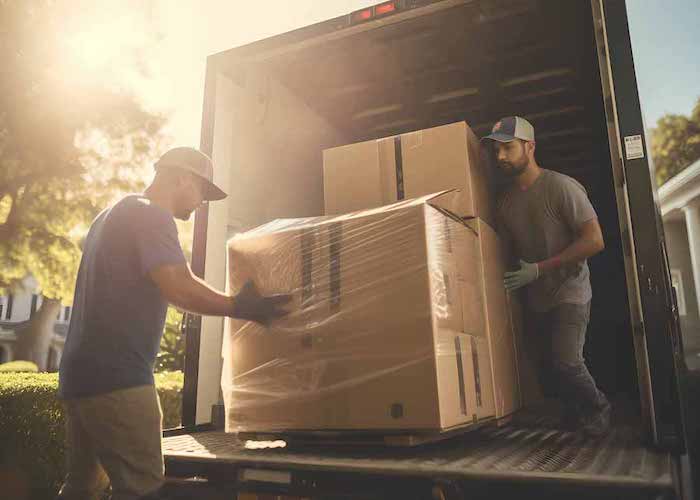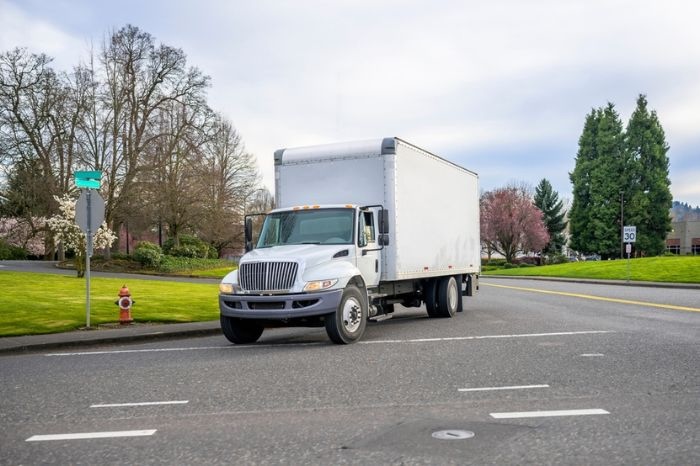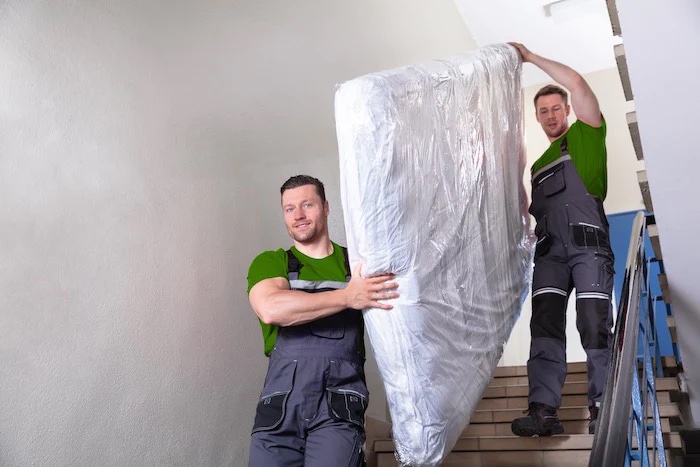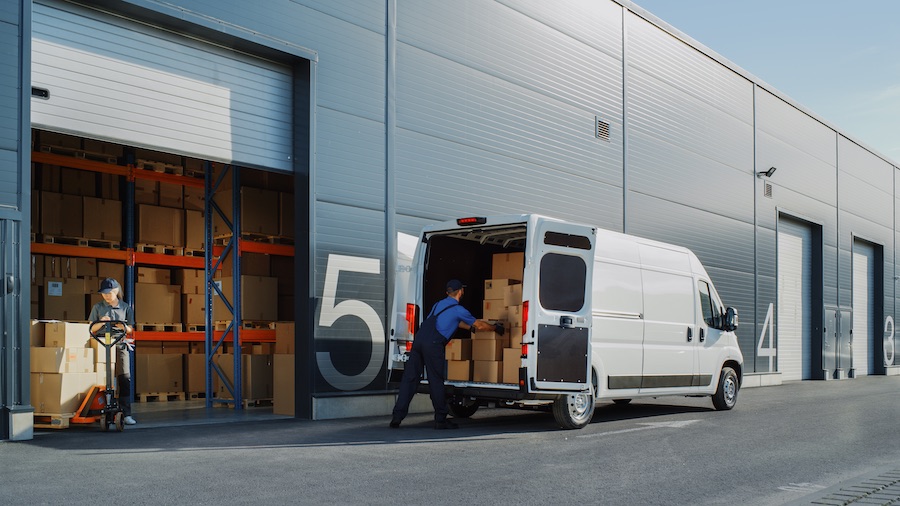Last Mile Delivery Cost Breakdown

Online shopping is more convenient for most consumers. It’s simple to choose items online, opt for quick delivery, and receive them at your doorstep within two days. But many e-commerce companies, do not have a suitable last mile delivery solution to match the required delivery speed needed to meet consumer demand.
Businesses refer to last mile distribution and delivery as the final step in the delivery process, focusing on how an order reaches a customer’s home. Businesses are focusing on optimizing the delivery process to meet demand and improve the convenience of online shopping for their customers and boost revenue.
Among last-mile delivery methods, the ongoing challenge is to identify the most cost-effective delivery solution that aligns with business scalability. Explore a detailed breakdown of last mile delivery costs, as well as strategies to enhance the overall efficiency of the last-mile delivery process and leverage REFURN’s professional network to access crowdsourcing advantages.
Last Mile Delivery Metrics
How has last mile delivery affected the e-commerce industry? The short answer is, in a huge way. Each year there is higher demand for quick delivery times, but companies have drastically improved on sales, average times and more.
- Shoppers Galore: Studies showed that in 2020, there were 255.99 million digital shoppers, which is a rapid increase from 230.57 million in 2017. Trends suggest this number will exceed 278.3 million in 2024.
- Higher Sales: E-commerce sales in 2023 increased by 7.7% year-over-year, accounting for 14.7% of total sales.
- Last Mile Delivery is Getting Faster: As of April 2023, the average time from order date to delivery is is nearly 4 days (3.8). This is significantly lower than April 2021, which was nearly 6 days (5.8).
- Influences Customer Decisions: According to a report, 62% of shoppers say delivery speed influences shopping decisions, and 85% will shop elsewhere if times are too long.
As you can see, the demand for last-mile delivery is growing and supply is dependent on factors like the size and organization of a fleet, efficiency of technology and safety measures. As demand rises, so do costs./p>
Why Is Last Mile Delivery So Expensive
The last mile of any order is probably the biggest burden on total shipping costs. Studies show that on average, last mile delivery now accounts 53% of all overall shipping and delivery costs.
Consider the fact that most e-commerce companies, take Amazon for example, are dealing with hundreds, even thousands of packages that need to be delivered to customers daily. Varying factors can cause disruptions, from traffic to weather to even vehicle problems, costs arise due primarily to transportation issues.
Failed Deliveries
As online shopping continues to be a norm in society, e-commerce businesses are under pressure to find fast and less expensive options to meet demand. Plus, companies also struggle to reduce costs due to the amount of failed deliveries, which eats into any budget.
These failures can happen for any number of reasons, whether the customer or driver missed a delivery window, vehicle issues.
Fuel Cost And Maintenance of Vehicles
No matter if the bulk of your deliveries are in rural areas that take long-distance driving or in heavy traffic in the city but with short stops, you’re going to account for fuel costs, which nowadays, is certainly not cheap.
Mileage is a great indicator to track finances needed for fuel costs, however, many businesses fail to account for idle and downtime, which can use up to 0.84 gallons of gas between everything from traffic stops and winding streets.
Lastly, no matter how specific you map out routes for delivery, there will still be mileage accounted for that is outside of those routes, given its easy to lose track of route plans due to the high number of stops needed to make deliveries. Studies show that out-of-route miles typically account for 10% of total mileage.
What Really Happens In Last Mile Delivery
Despite its apparent simplicity, ordering something online involves intricate processes behind the scenes. Companies strive to enhance last-mile shipping and delivery, and the majority typically adhere to similar steps in pursuit of improvement.
Last Mile Breakdown
- All systems go.
When a customer places an order, it goes into a company’s centralized system for inbound and outbound deliveries. - Off to HQ.
Upon entering the system, orders trigger the initiation of the delivery process as goods from the primary hub, often a manufacturer or warehouse, are dispatched. - The route tree.
Here is where the optimization process commences. The system decides the delivery method, taking into account factors such as location and other relevant considerations. - Time for assignments.
The company assigns delivery tasks to workers, who may be either in-house or contracted employees. The tracking of items is implemented to verify the accuracy of the inventory. - Stay tracked.
Before being sent out for delivery, each item undergoes scanning to guarantee the precision of the inventory. - Where’s the proof?
Companies need to to require proof of delivery, whether in electronic or printed format, for the purpose of upholding accurate inventory records.
What Customers Are Looking For
Imagine you’re indulging in a little self-care. You’ve just placed an order for a new shirt on Amazon and are eagerly anticipating trying it on. Naturally, you want it delivered as swiftly as possible, and that’s the top priority for companies in the last mile—ensuring the customer receives what they want in the shortest time frame.

Fast delivery
The roster of last-mile delivery companies is expanding, with a shared emphasis on optimizing delivery speed. Setting the industry standard, Amazon is best known for their 2-day shipping option, influencing others to prioritize efficiency in completing the delivery process.
Amazon’s last-mile delivery stands out due to the unique feature of Amazon Prime, which offers the option to pay for same-day delivery, thereby further increasing demand.
Precise order tracking
Customers want to know how long it will take before their order arrives. While it differs based on the company, most have their own unique way of order tracking.
Certain services utilize a last-mile delivery courier that offers a broad indication of your order’s location along its route, while others feature real-time GPS tracking, providing customers with precise and up-to-date information on their order’s status.
For example, REFURN has a unique tracking system, where customers just have to put in their zip code and the name on the order to get a status for removal, assembly and delivery jobs.
Specialized services
Delivery services are a lot like any other industry. In order to gain an advantage in the marketplace, you’ll be better off finding something unique or an area where your company exceeds to separate from the competition. What can your company specialize in?
At REFURN, customers can get a guaranteed price for services online instead of an estimate. Plus, we offer flexible payment options like Book Now, Pay Later and much more. All of these features help us become the go-to source to help companies with logistics like processing returns and last-mile delivery.
We specialize in removing mattresses, couches and furniture, game tables, desks and much more. Plus, our providers can provide other solutions such as donation pickups, hourly labor and moving services, property cleanouts and more. Our technology allows us to crowdsource to hire workers, which cuts out the cost of a courier for delivery, as well as reduce costs overall.
Optimizing Cost-Effective Last Mile Delivery
In theory, the process where an item goes from a manufacturer to a customer’s home seems simple, but delivery services across the country have wracked their brain to figure out the best way to operate efficiently.
In the end, it’s all about the money. How much are you paying and how much are you saving? That’s the first step toward optimizing the last mile delivery service.
Where To Cut Costs
Typically, the last mile of the delivery process accounts for over half of the total shipping cost. From a wider view, operations generally account for 40 percent of the world’s entire supply chain cost. For reference, each delivery costs roughly $10. So basically, services are already behind when taking on the challenge.
Problems occur mainly due to the large amount of transportation required to get single packages to customer’s homes, rather than items in bulk to one specific location.

Improve Routing For Faster Delivery Speed
Whether its a large fleet of white vans preparing for delivery or a contract with the postal service, last mile delivery companies have to make arrangements to ensure their goods and bulky returns are being transported quickly and safely.
More and more companies have started using technology, such as a last mile delivery app, real-time GPS tracking, SMS notifications and other updates on applications to ensure the customer is fully in the loop when it comes to their order.
REFURN’s technology, for example, allows for our professionals to deliver returns to a vendor or store with more efficiency.
Solving Traditional Last Mile Delivery Issues
Solving the issues with last mile delivery come down to decreasing costs and increasing volume. The more you can deliver the happier the customer. Likewise, the less you spend on a budget will keep the bosses happy.
How To Reduce Delivery Costs
Last mile delivery costs continue to soar in the E-commerce sector. With the rise of free shipping, most customers don’t even bother paying a delivery fee, which often means the company has to foot the bill. But, don’t fret! There are some potential solutions.
Customer-Centric Experience
Customers often order items to be shipped to their home even when they aren’t there, which can cause problems for couriers who may need a signature.
At checkout, companies can give the customer a number of different options, including specific delivery windows, to avoid the risk of a repeat trip.
Revolutionizing Delivery With technology
Technology is pretty cool, right? We use it everyday, but we should be using it more in the last mile delivery process! Applications and ideas such as auto-dispatch technology, optimized delivery routes online and a delivery verification system can all help a company.
The ultimate end goal is to keep track of their goods and how quickly they’re delivered.
📲 REFURN is using the same cutting-edge technology to optimize last mile delivery and process returns. Interested in being a partner? Sign up here and join the list!
Can Crowdsourcing Help With Last Mile Delivery?
While some companies rely on a fleet of vehicles with hired drivers to run deliveries, the costs for this often meet the demands of customers. While there are many ways to optimize the delivery process, one solution is to rely on a network!
With the rise of Uber, AirBnb and Postmates, location-based crowdsourcing is an attractive option for companies to use for last-mile delivery. By relying on the growing gig economy, crowdsourcing helps out both the consumer, the partner and the company itself!
By employing contract workers with easy-to-use technology, companies can save on costs, have little assets in operations and overall, improve the customer experience.
For the customer, crowdsourcing makes it easier for orders to arrive quickly and ensures the customer is in their home. For the retailer, it allows flexibility for finances.
With the only remaining expense being the warehouse for manufacturing, companies can turn their focus (and money) toward deliveries. Not only that, but companies have variability, meaning they can scale their operations up or back as they deem fit.
REFURN’s Professional Network
REFURN deploys a network of trusted professionals who are background-checked and contractually work in junk removal, assembly and more.
This crowdsourcing method and our potential last mile delivery software can allow us to reduce costs that come with traditional methods of delivery such as a fleet or courier.
❓ Questions about our prices? Learn more by contacting us today!


